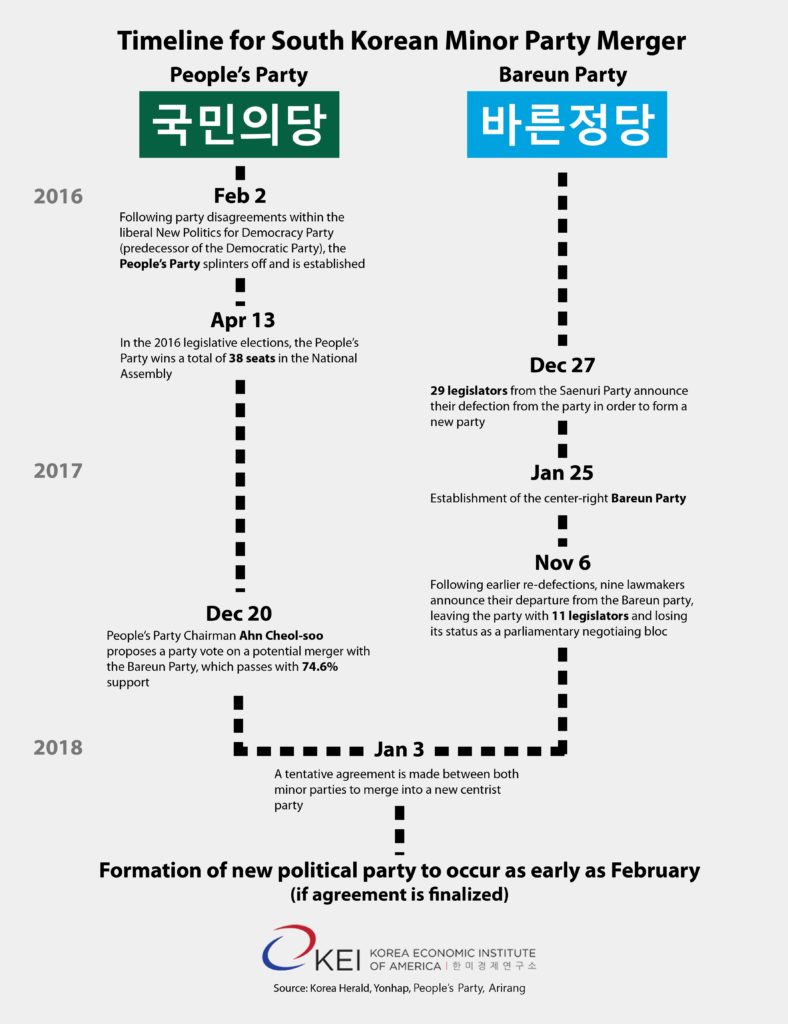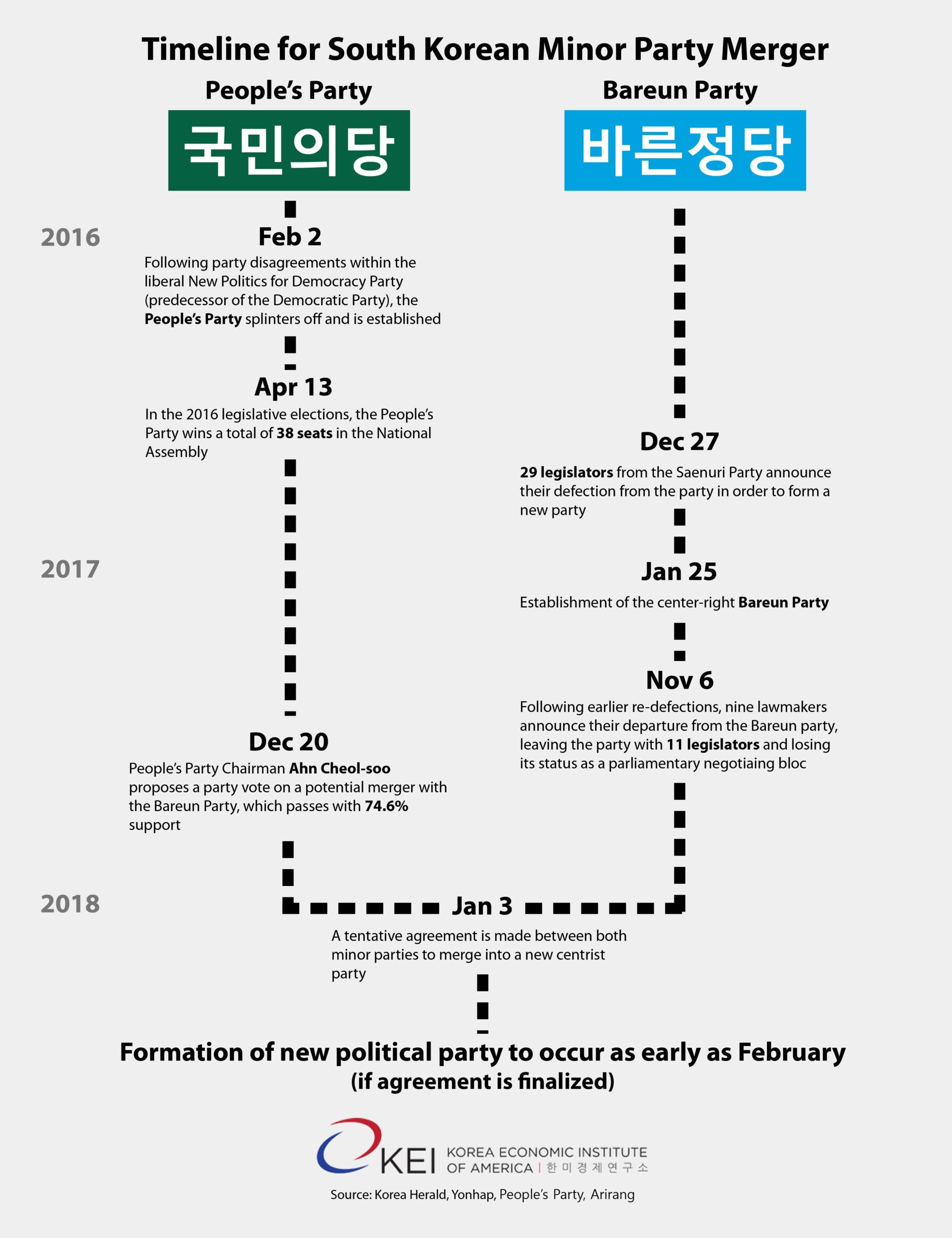The Peninsula
The Potential Merger of Two South Korean Minor Parties

By Juni Kim
Last week, two minor South Korean political parties, the People’s Party and the Bareun Party, announced an agreement to merge into a new centrist party. Although the agreement has not been finalized, the merger if completed would be a significant test for the viability of an influential third political party in a South Korean political system that has been largely under the rule of the two major parties. Although party mergers, splits, and rebrandings happen on a relatively frequent basis in South Korea, there has yet to be a minor party that has significantly challenged the dominance of Korea’s two-party system.
While the liberal Democratic Party and the conservative Liberty Korea Party hold a total of 238 seats of the 300 seats in the National Assembly, the People’s Party, which splintered off the predecessor of the Democratic Party, currently has 39 lawmakers in the legislative body, while the Bareun Party, an offshoot of the Liberty Korea Party, currently has 10 legislators. The Bareun Party in particular has seen its numbers dwindle sharply from over 30 lawmakers to just 10 over the past year due to members defecting back to the Liberty Korea Party, with one Bareun lawmaker declaring his defection recently. The defections led to Bareun’s lost status as a parliamentary negotiating bloc, which requires a minimum of 20 national assembly members.
People’s Party Chairman and former presidential candidate Ahn Cheol-soo proposed the party merger late last year in order to expand centrist influence in the legislature against the two major parties. His proposal and the ensuing talks between the People’s Party and Bareun Party remain highly controversial with lawmakers on both sides voicing disagreement to the potential merger.
If the merger does go through, the true test for the newly formed party’s lasting existence would be the upcoming legislative elections in June. The People’s Party surprised many analysts with its relatively strong showing in 2016, and it will be of noteworthy interest to see how voters would accept the merged centrist party.
Below is a brief overview of the People’s Party and Bareun Party’s timeline from their respective establishments to last week’s tentative agreement.

Juni Kim is the Program Manager and Executive Assistant at the Korea Economic Institute of America (KEI). The views expressed here are the author’s alone.
Photo from lets.book’s photostream on flickr Creative Commons.
